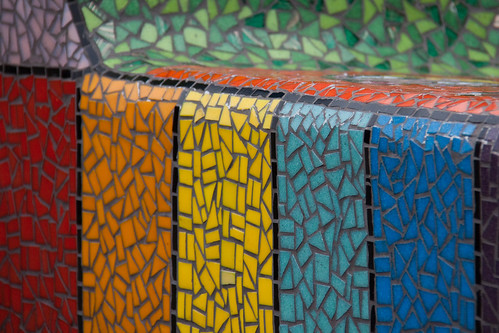Textiles : Design
Color in Design
-
Color Association of the United StatesProfessionals in the field of color styling, color use, color research, marketing and merchandising.
-
Why Color MattersAn explanation about color theory.
-
Inter-Society Color CouncilProfessional society in the field of color in the United States, encompassing the arts, sciences and industry.
-
Herman-Miller: The experience of ColorAn analysis of color and it's effects on humans.
Color
Colors play an integral role in textile design, creation, and description. Textile designers use colors to apply certain aesthetics or functions. Fibers are dyed to create rich textures within the fabrics themselves. When describing the use of colors in textiles, viewers express unique perspective and interpretation.
Color itself is determined through an interpretation of ocular sensations. Alain Chrisment's exploration of colorimetry* defines the process of interpreting colors through three elements (light source, object, and observer), referred to as the "triplet".
By measuring the sources and properties of light, in combination with various attributes of an object, through the receptors that influence an observer's interpretation, the "triplet" determines the qualities of color as seen through human eyes.
*Chrisment, Alain. Color & Colorimetry. Paris : 3C Conseil, 1998.
Surface Design
Textiles can be embellished and enhanced using any number of surface design techniques. Some examples of textile treatment include:
- Painting and Printing
- Dyeing
- Sewing
- Embroidery
- Embellishment
Textile designers often employ a combination of these types of treatment, each with various techniques and options that can be done on an individual-by-hand level or at the industrial-machine-produced level.
Painting and Printing can be done by hand, with wooden blocks, or with elaborate machinery.
Dyeing involves the immersion of "yarn or fabric...in a solution produced by boiling up selected raw materials or dyestuffs. In origin these may be animal, vegetable or mineral." (Gillow and Sentance, 118) Therefore, some materials are unique to a specific geographical location and/or its natural resources.
Sewing transforms pieces of fabric into detailed textiles, such as quilts, molas, or patchwork, or into shapely articles of clothing.
Embroidery uses stitches to decorate fabric; there are three basic kinds of stitches used around the world, flat, knotted, and linked and looped (Gillow and Sentance, 170).
Embellishment utilizes material objects like buttons, shells, beads, or shiny pieces to create designs and appealing details to textiles.
*Gillow, John and Bryan Sentance. World Textiles. Thames & Hudson Ltd. : London, 1999.
